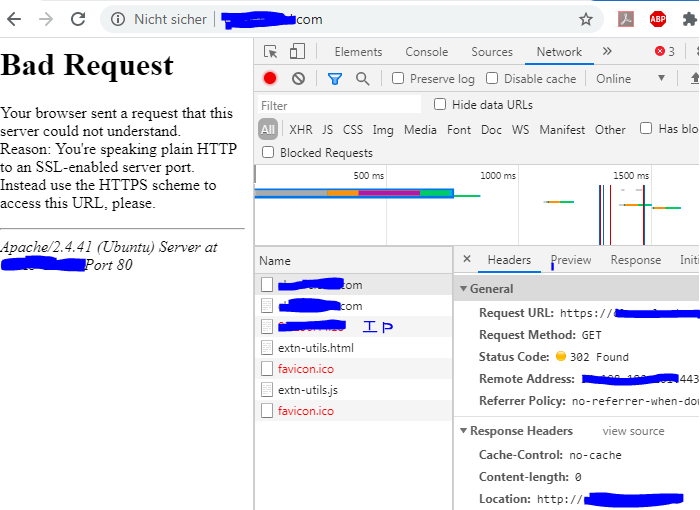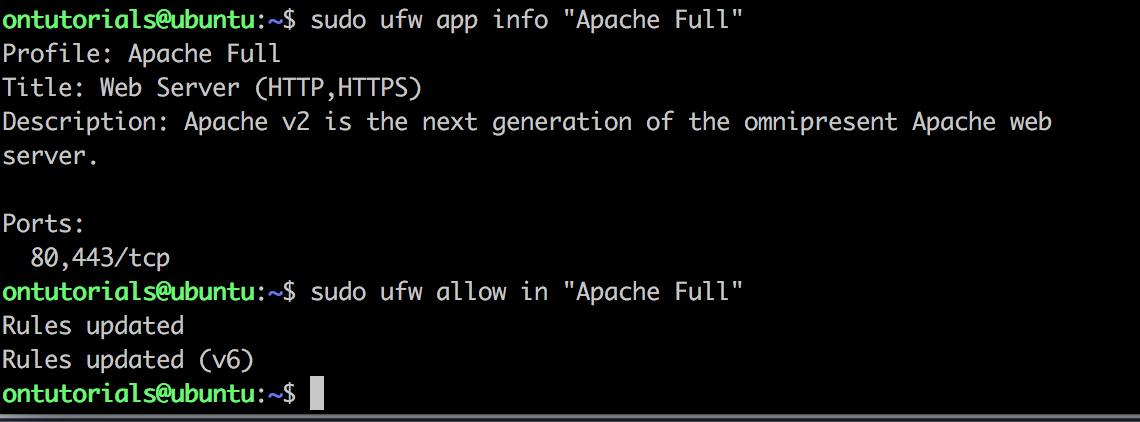Apache 80 443
This appendix describes the method of enabling SSL for Apache. The following topics guide you through the necessary steps:
- Generate the Certification Request
- Modify httpd.conf File to Enable SSL
In this post I configure a url redirection from HTTP to HTTPS and viceversa using the Apache modproxy and the ProxyPass directive. I assume an environment consisting of two hosts: a Web Server Apache in front of a Tomcat Applicaton Server.In the following first example the Apache ProxyPass redirects the HTTP requests to the SSL port 8443 of the Tomcat Server.
Generate the Certification Request
The first one for the HTTP version of the site on port 80, and the other for the HTTPS version on port 443. In Red-Hat based distros such as CentOS and Fedora, virtual host files are stored in the /etc/httpd/conf.d. While on Debian and its derivatives like Ubuntu the files are stored in the /etc/apache2/sites-available directory. Apache - Redirect all taffic from port 80 to 443 failing. Ask Question Asked 5 years, 3 months ago. Active 5 years, 3 months ago. Viewed 4k times 0. Hi I'm trying to. Configuring Apache HTTP Server to listen on specific addresses and ports. To make the server accept connections on both port 80 and port 8000, on all interfaces, use. Https is the default for port 443 and http the default for all other ports.
Perform the following steps to generate a certificate request:
- Make the following changes to the
openssl.cnffile to generate the certificate request:Use the commands below to generate the certification request:
When you run the final command, a certificate request is generated. The following is an example of a certification request: Nod32 with lifetime crack.
Please enter the following 'extra' attributes to be sent with your certification request:
Be sure to take note of the following:
- These commands create two files:
key.pemandcsr.pem(certificate request). - For Common Name, include the FULL name of the HOST and DOMAIN you are running the command on.
- Remember the password you enter. This password is used every time Oracle HTTP Server is started.
- These commands create two files:
- Send the Certification Request. In the CSR area, paste the certification request from
csr.pemfile. - When you receive the certificate, paste it into a file named
portalcert.crt.Be sure that you get the Root Trial CA certificate by going to the URL mentioned in the Certificate Authority email. Export that certificate from the browser to a file named
rootcacert.crt. - Copy the following in appropriate directories:
- Certificate file
portalcert.crtinto the..ApacheApacheconfssl.crtdirectory. key.pemfile into the..ApacheApacheconfssl.keydirectory.- Root Trial CA file
rootcacert.crtinto the..ApacheApacheconfssl.crtdirectory.
- Certificate file

Apache Rewrite 80 To 443
Modify httpd.conf File to Enable SSL

Tcp 80 443
Make the following changes to the httpd.conf file to enable SSL:

- Port changes: Be sure your entries are similar to the ones in the example below:
- SSL Certificate related entries: For Entry for Certificate, search for
SSLCertificateFileand make this entry as below pointing to your certificate that came from the certificate authority. This is illustrated in the following example: - Restart Apache.
Hi!
I need to change port 80 and 443 to something else for Nextcloud (Apache) and I just need to have my own solution confirmed or corrected.
- I change port 443 to 8443 in /etc/apache2/sites-available/default-ssl.conf
- I change port 80 to 880 in /etc/apache2/sites-available/000-default.conf
- I change to ‘overwrite.cli.url’ => https://exampel.ddns.com:8443/nextcloud in /var/www/nextcloud/config/config.php
- Open port 880 and 8443 in my router

My address to my Nextcloud will then be https://exampel.ddns.com:8443/nextcloud

Does this looks right? I know this really is a question about Apache aside from the “‘overwrite.cli.url’ =>”-bit but I hope you could confirm or correct my thinking if I’m very nice
